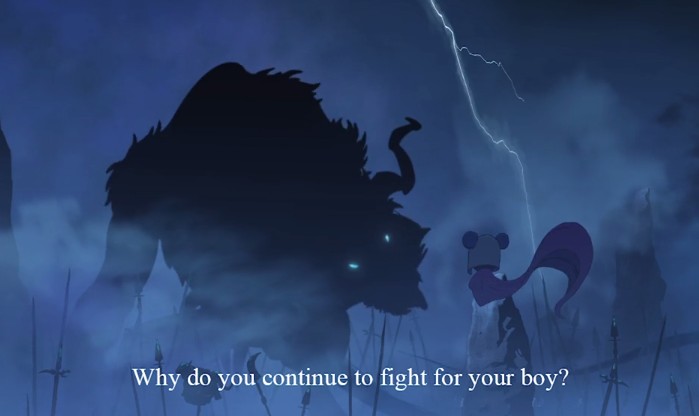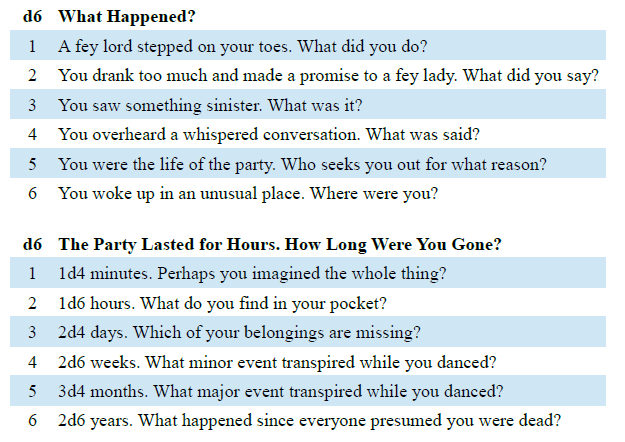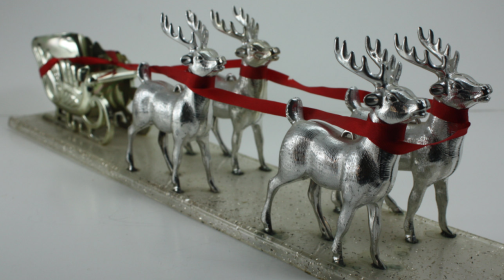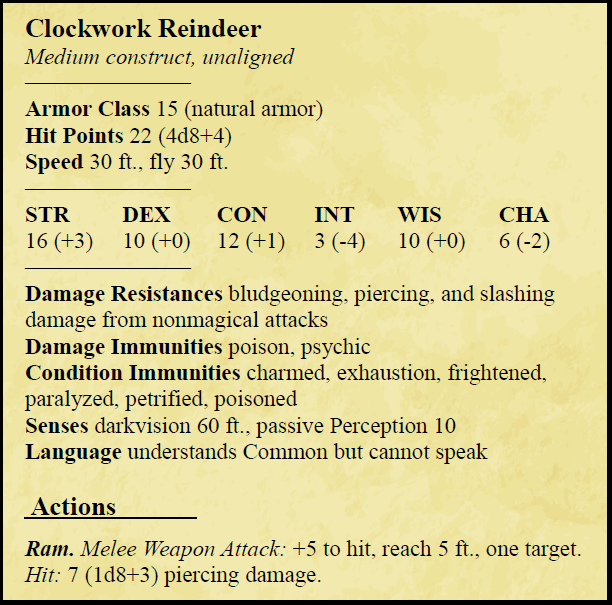Days 23 & 24: Toys & Eve
Well, I might not have posted consistently on-time, but I’m finishing on time. Here’re the last two days of the OSR Christmas Calendar. If you’ve never watched the short film from where the image below comes, you’re wrong. Click on the image to start being right.
Evil things hide in the dark. They haunt lightless places, hungering and waiting for a chance to terrorize and hurt, and children are all too often these monsters’ preferred prey. If only champion toys were more common.
1E Stats
Frequency: Very rare
No. Appearing: 1-12
Armor Class: 3
Move: 12″
Hit Dice: 3+3
% in Lair: 90%
Treasure Type: Nil
No. of Attacks: 1
Damage/Attack: 1-8
Special Attacks: See below
Special Defenses: See below
Magic Resistance: Standard
Intelligence: Average
Alignment: Any good
Size: S
Psionic Ability: Nil
Attack/Defens Modes: Nil
Level/XP Value: IV/185 XP + 4 XP/hp
A champion toy appears to be a normal toy, usually some sort of stuffed animal such as a bear or a dog. Indeed, much of the time, a champion toy is nothing more than a child’s plaything. At night, in darkness, or when evil is near, however, a champion toy comes alive to defend those who cannot defend themselves. Legends say that champion toys are brought to life by the spirits of holy warriors who died in battle.
A champion toy can detect evil at will. It makes all saving throws as a 5th-level fighter with a +2 bonus on the dice. A champion toy is immune to all diseases, including magical ones. It can use cure light wounds twice per day and cure disease once per day to heal another creature. When within 10 feet of a noncombatant or otherwise helpless creature, a champion toy continually emanates protection from evil in a 1″ radius.
It attacks with natural weapons or a perhaps a toy weapon. Regardless, its attacks are treated as a magical weapons for determining what creatures it can damage, and a champion toy’s attacks inflict double damage (2-16) against the undead and evil extraplanar creatures.
A champion toy is fearless. It cannot be affected by fear or similar magic, and it never fails morale checks. When reduced to fewer than 6 but more than 0 hero points, a champion toy attempts a saving throw versus death magic. If it succeeds, it immediately recovers 3d4+3 hit points (but its hit point total cannot exceed its normal amount).
5E Stats
Tiny celestial, any good
Armor Class 17 (natural armor)
Hit Points 18 (4d4+8)
Speed 30 ft.
Ability Scores STR 10 (+0), DEX 18 (+4), CON 14 (+2), INT 11 (+0), WIS 16 (+3), CHA 15 (+2)
Saving Throws STR +2, DEX +5, CON +4, INT +2, WIS +5, CHA +4
Skills Perception +5
Condition Immunities charmed, diseased, exhaustion, frightened
Senses darkvision 60 ft., passive Perception 15
Languages Celestial, Common
Challenge 1 (200 XP)
Champion Aura: When within 10 feet of an incapacitated creature, the champion toy and the incapacitated creature are affected by protection from evil and good. The champion toy does not have to concentrate to maintain this effect.
Champion Fortitude: If damage reduces the champion toy to 0 hit points, it must make a Constitution saving throw with a DC of 5 + the damage taken, unless the damage is necrotic or from a critical hit. On a success, the champion toy drops to 1 hit point instead.
Champion Weapons: The champion toy’s melee attacks are magical. When the champion toy hits a fiend or an undead with a melee attack, the attack deals an extra 9 (2d8) radiant damage.
False Appearance: While the champion toy remains motionless, it is indistinguishable from an ordinary toy.
Innate Spellcasting: The champion toy’s innate spellcasting ability is Wisdom (spell save DC 11). It can innately cast the following spells, requiring no material components.
At will: detect evil and good
2/day: cure wounds (other creatures only)
1/day: lesser restoration (other creatures only)
Actions
* Champion Attack: Melee Weapon Attack: +6 to hit, reach 5 ft., one target. Hit: 8 (1d8+4) bludgeoning, piercing, or slashing damage, depending on the champion toy’s specific form of attack.









